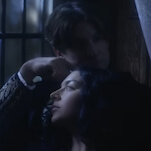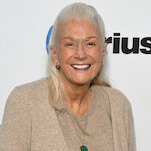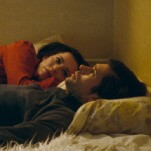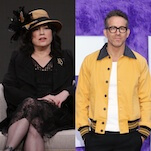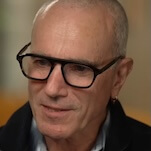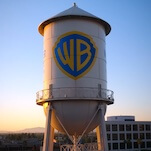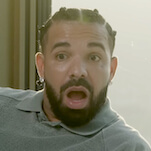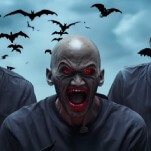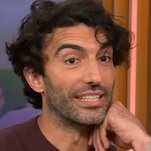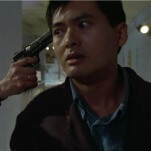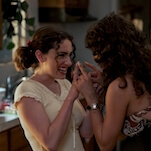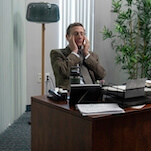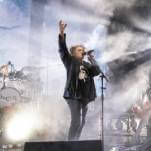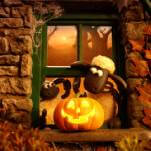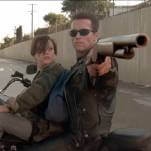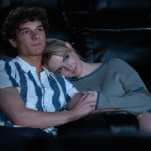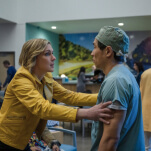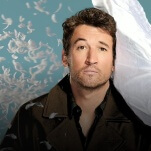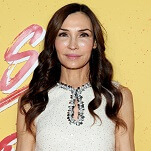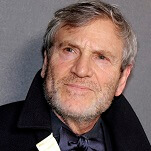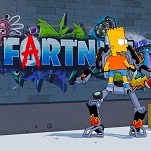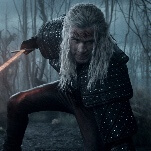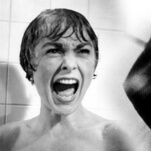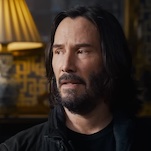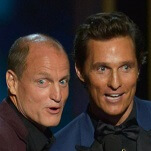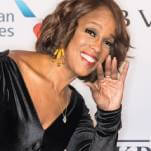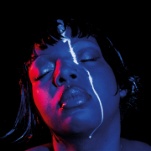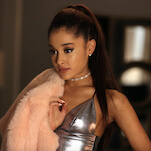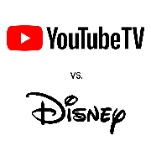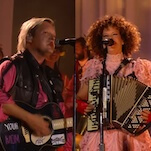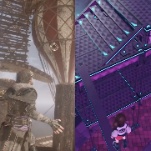Following a series of short films and a pair of acclaimed features about strong, disturbed women, 1989’s Sweetie and the 1990 Janet Frame biopic An Angel At My Table, New Zealand-born director Jane Campion broke through with 1993’s The Piano, a period drama about a mute pianist (Holly Hunter); the film won the Palme D’Or at Cannes and earned Oscars for the screenplay and for Anna Paquin’s supporting performance. Since then, Campion has lost none of her ambition, but critical support hasn’t always followed on difficult projects like the Henry James adaptation The Portrait Of A Lady, the exotic romance Holy Smoke!, and In The Cut, her unexpected take on the Hollywood erotic thriller. After a six-year hiatus, Campion has returned to terra firma with Bright Star, a swooning, impressionistic drama about the last three years of John Keats’ life. In particular, the film focuses on Keats’ relationship with his neighbor Fanny Brawne (Abbie Cornish), a chaste romance cut short by his death at age 25. Campion recently spoke to The A.V. Club about negative capability, how Keats’ life relates to hers, and how she learned to start trusting young people.
And definitely, I remember we were discussing it in rehearsal, because we were trying to do something a little bit different. We were trying to create a sense of presence in the actors rather than layering it on, just a period quality. I wanted a humanness, so what does that mean, and how do you find it? Well, everybody’s very nervous in rehearsal, because they want to show they can do something. [Laughs.] I remember rehearsals felt kind of messy, and the actors were going, “Well, this isn’t working. Why aren’t we getting up and doing this?” and me just saying, “You know what? I think we’re doing the negative-capability thing.” And everyone’s like, “Oh, yeah!” Thank God I’ve got a name for it, you know? And it really was like that, that people just started to drop down into a different register, which I think had less effort in it. It wasn’t like a thing you had to perform. Just thinking, it was an easeful thing, which is another idea of Keats, that poetry should come as easily as leaves to a tree, or it had better not come at all.
JC: That’s is a good question, because I invented quite a lot of stuff, but I did confine myself to the real order. And I didn’t invent crazy things for the hell of it. Probably the furthest I went was the butterfly farm. I don’t think there’s any record of the butterfly farm. [Laughs.] Although I think I took my lead from [Keats] saying, “I wish we were butterflies at three days,” and then imagining that this is summer, and she might be thinking about it or whatever. So really, I’ve been inspired by the letters, by the story, and I used as my parameters the timeline, and then I kind of made my own ballad of Fanny and Keats.
AVC: It seemed like there’s a particular amount of leeway in terms of the way Fanny is defined. Is that fair to say?
JC: It’d have to be both of them, really. As soon as you embody a person, it’s not the real person, even if it was a biopic. No matter how strict you’re trying to be, it’s just going to be invented. And I didn’t really have any problem with that. When I read the story, I started seeing images in my head of who they might be, of what they might seem like or look like. And I guess, for me, this is just one way of approaching the topic of Keats and his poetry. I think there’s hundreds of them. This seemed to me the broadest and most available. For me, it worked, when I read it in a biography. And then from there, I started reading his letters, the whole collection of them, and then I started to read his poetry. Then you can circulate back to the biography again, and so it goes on.
AVC: So what makes him special, in your mind, among the Romantic poets?
JC: I have often thought about Shelley, too—not that I’m that great a reader of poetry, but Shelley’s life is so curious. But I think the quality of the story that made me particularly decide to choose Keats is the fact that there’s a kind of innocence around his story, a purity. He had such a sweet nature. And yet he was interesting, inquiring, and a passionate friend. He wasn’t running at romance, either. He was very suspicious of it. In the letters, he would lampoon all his friends that were on their knees to some woman, and make terrific jokes about how when a guy falls in love, it could be any kind of a stray dog or a piggy-looking person, but for them, they’re beautiful. It’s like, he said, they kind of become blinded. And then, of course, he too becomes blinded. [Laughs.] I think it’s the innocence of the story that is just embedded in it because of him dying so young. I don’t know, it moves me.
AVC: There’s also a sense of love being almost a creative act. You wonder what the relationship is between this expression of love in his poetry and the reality of it.
JC: There are some things that are real, that you can see, that you can observe, like the moon, and grass and things. But for ideas to become real, they have to be played on your senses. They have to come through you. And that act brings them into the world. I don’t know if I’m really answering your question here, but I can only imagine from the things he said that the experience of loving, of his attachment, of his obsession, of his passion, created something real. Like you say, it’s a good thought. And I think this is interesting, us human creatures are capable of love, and it’s a very powerful emotion. It also can go awfully wrong. [Laughs.] And I think, for them, because of the sort of love they had, it was very difficult.
AVC: One of the big pitfalls about films about artists of any kind is that the biography either overwhelms the art or has almost a facile or fleeting relationship with it. Do you agree with that? What goes into a more illuminating biopic?
JC: I thought there was no way to tell the story that is a birth-death biopic. I wouldn’t do it. Because it would be too generalized within two hours, unless you found some really crazy way to do it, like that Bob Dylan one, the Todd Haynes one. [I’m Not There.] Which is, I thought, great, and very interesting. Unless you take an extremely different view of [a subject], it just wouldn’t work for me.
The part of this story that was so accessible to me was the love story. Plus the fact that the letters were real; I could read what Keats actually wrote to Fanny. And when you read them, you think, “Well, this is what she was reading in 1819 or whatever.” You think, “Oh my God. What an incredible girl to handle it, in a way, so well.” Because they’re very full-on. I think I would have been intimidated, and been… [Makes nervous noise.] I admire her courage and loyalty to accept the full-on blast of his affections. I think also there’s something that interested me about the tenderness and delicacy and gentleness of the story that’s not at large in cinema much today.
AVC: It’s fairly unique to do it from a perspective other than the artist’s.
JC: From Fanny’s point of view, yeah. I think that was very helpful in creating the parameters as well. I started off with the idea that we could only do what she might have seen: She meets Keats, we meet Keats. And I think it was useful that she wasn’t really a poetry lover. She liked trumpery novels and Byron, which of course he would have hated. [Laughs.] So I felt a bit like her, too, that poetry was hard, a little bit inscrutable. One of the great joys for me in doing the project was, a few of us got poetry lessons from a professor as we were going along. And we just all loved it. It’s a bit like another language. You have to put a bit of effort in now, because a lot of the allusions or poetic forms are all… While you can just admire them, there’s a lot more you can know about it that helps you understand it.
AVC: You’ve made several period films at this point. What is your approach to period? Specifically in this film, what were you looking to evoke about the way people lived in the early 19th century?
JC: With Bright Star and with The Piano, too, I felt a kind of sadness about it being in such a different era, because of my lack of experience with the era. And one of the ways I’d get over it is to remind myself that every film, even if it’s contemporary, creates its own world. There are always a lot of choices about what parts of the world a film is going to show and see. Visually, that creates a kind of flavor for it, or a mood, or atmosphere. In this story, we had pretty strict budget concerns. And it’s very difficult to get an idea of what 1820s England looked like. So we had to kind of make it up. When we researched it, we looked at Keats’ house, and we looked at hundreds and hundreds of paintings and etchings and anything we could find. For example, I saw a picture in the Keats museum house, and I took a very fuzzy photo of with my camera, and I copied that look for the back of the house, as we imagined it might have backed onto the heath at the time. And in CGI later, we made it into almost like an Italian hill town. [Laughs.]
AVC: CGI? Really?
JC: Yes. We had this fantastic young girl [Viv Baker] who was more or less out of art school and made a short film with my composer [Mark Bradshaw], who’s also really young. And he had produced it, and I went to the screening and thought, “Wow. She’s so clever.” So she became in charge of my visual effects. I think the thing about working on a project where the subject, Keats, is a genius who probably did his best work at 23, it makes you very confident about working with young people. So I took that on, a really young director of photography [Greig Fraser], and a really young composer, and this really young CGI girl, and in a way, they’re kind of brilliant. And what I can offer is probably, if anything, the missing ingredient, just guiding them. People pretty much are what they are. From the age of about 16 on, they’re sort of learning, learning, learning, and that was one of the fun things about working on this film. Just realizing, “Okay, everybody in this story is so young and accomplished.” And these days, it’s sort of like accepted wisdom that you don’t really take anyone seriously until the end of their 20s.
AVC: One of the striking things about Bright Star is its insularity. You can feel this invisible force pressing down on Keats and Brawne, but the film doesn’t venture out into the larger world much.
JC: What we tried to do, and what Andrew Motion reminded us of, was that it was a pretty difficult time economically and socially in England. There was the French Revolution next door, and there was a lot of fear that that dissatisfaction with the ruling classes would arrive in England, and there’d be some beheadings there, too. And also, it was a time when a lot of people were emigrating. For example, Keats’ brother George emigrated to America just before this film begins. That’s why we’ve got these long letters. We know so much about what Keats was doing at the time, because he’d write letters that went on for months, keep adding to them. And also, Keats’ friend Charles Brown is in the film. He emigrated to New Zealand! I felt some claim to the story. And I think this is the type of people Keats mixed with, they were dissatisfied with their opportunities in England.
AVC: Keats’ work was savaged by critics at the time, only to be revered later on. Is that a sly bit of commentary on your part? And what are we to make of the fact that Fanny, who isn’t particularly literate, gets Keats, while the experts don’t?
JC: There’s no artist in this world that doesn’t enjoy the dream that if they have bad reviews now, the story of Keats can redeem them, in their fantasy or imagination, in the future. I think Keats’ poem “Endymion” is a really difficult poem, and I’m not surprised that a lot of people pulled it apart in a way. But as [John] Reynolds says, it has many beauties. There’s many good things about it as well. And it’s the poem that begins, “A thing of beauty is a joy forever,” which is one of the all-time quoted quotes. People don’t even know where it’s from. It’s entered our language. It has so much in it, and the beginning of the poem really is breathtaking, and so easeful and sweet. But the ambition of the poem… I couldn’t follow it anyway. I didn’t really master it. So to me, Fanny has much the opinion I have. As for how criticism of Keats’ poetry relates to criticism of my own work, I’ll leave that for others to decide.
